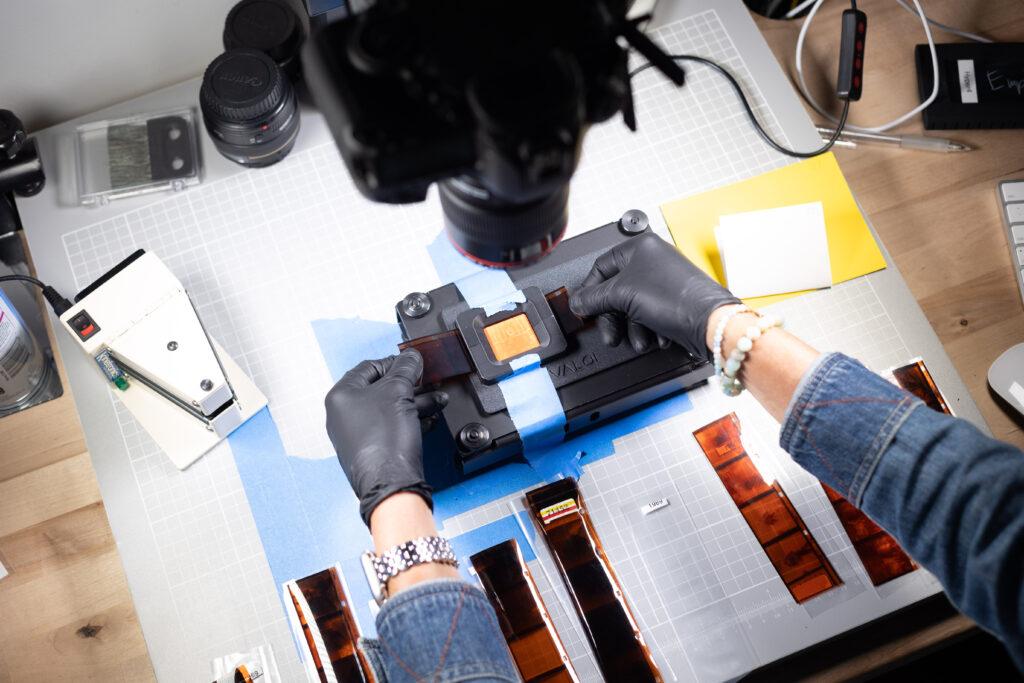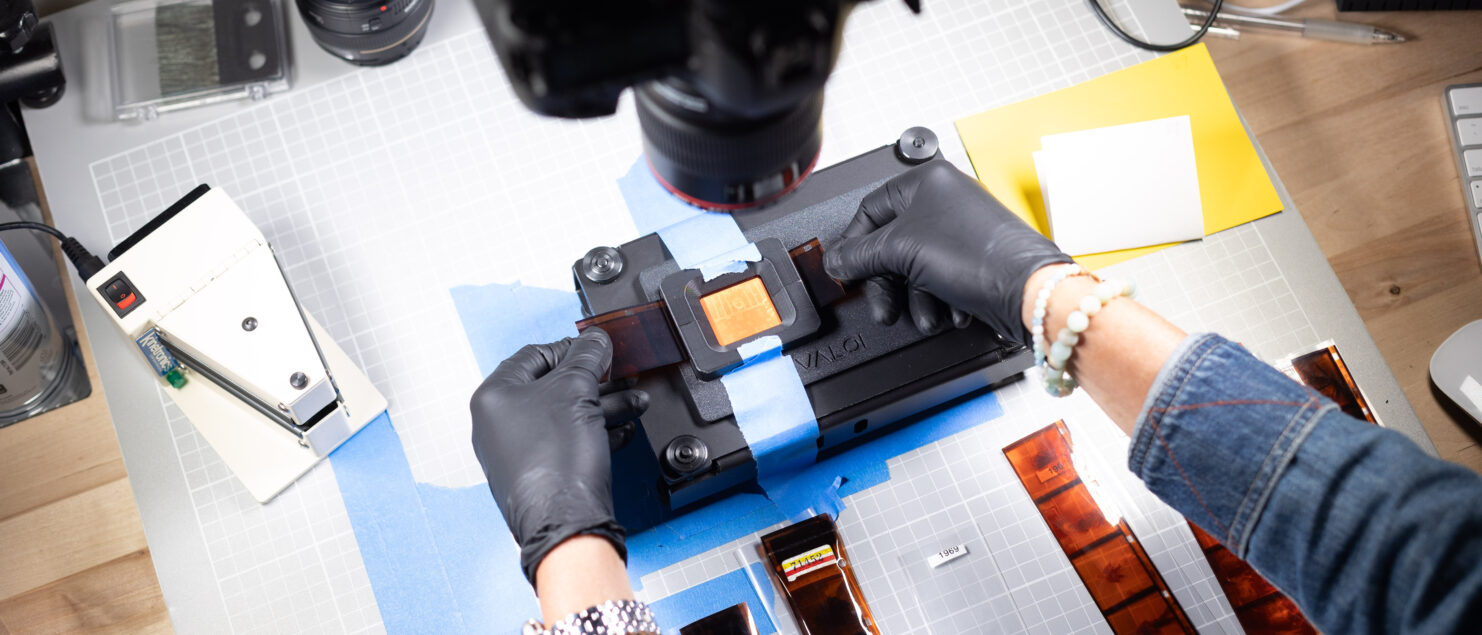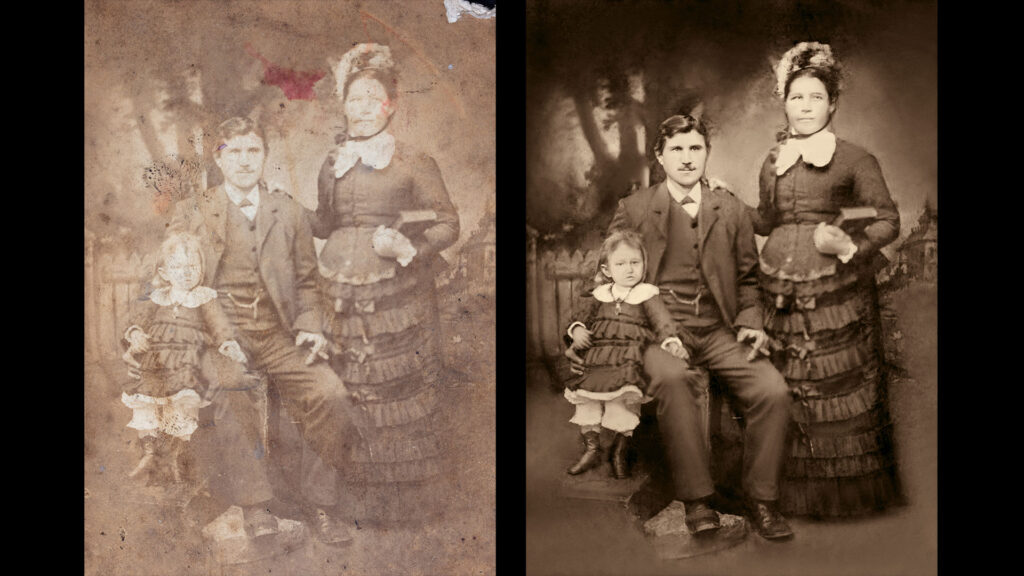Seven Common Photo Scanning Mistakes
I’ve been scanning photos for more than 30 years and have developed an excellent process that yields museum-grade results and doesn’t take forever. I’ve scanned countless photos for families, companies, archives, and my own family photos dating back to 1904.
Through that experience, I’ve identified seven common mistakes people make when scanning photos. Do any of these sound familiar?
Wrong Scanner
There are many different types of scanners, but they’re plagued by issues including low quality, slow speed, and the risk of damaging your photos. For example, traditional flatbed scanners are the most common choice, but the technology is 30 years old, the results are mediocre, and the speed is unusably slow. There are modern high-speed scanners, but they can’t scan slides or negatives and they’re prone to scratch printed photos. At Chaos to Memories, we scan everything with the same camera scanning technique that you’ll find in museums and archives around the world, which uses the latest digital imaging technology and is safe and gentle for your old photos. This requires a much larger investment in equipment and more technical skills, but it allows us to digitize any photo format ever at the highest quality and with fast turnaround times.
Not Scanning the Original
Many people don’t understand the difference between prints and negatives, and some folks even discard their negatives because they don’t know how to handle them or how to scan them. Some folks boast they’ve thrown away all their “useless” negatives, and we cringe inside. If prints are all you have then those can be scanned, but they won’t result in the best quality scan. If you have the original negatives, those should be scanned to capture the best resolution, most faithful color, and most complete image.

Wrong Resolution
Image resolution is the basic measurement of digital image quality, but it’s often misunderstood. If you scan a photo at too low a resolution, you lose detail and limit what you can do in the future, such as printing and restoration. But if you scan at too high a resolution it takes longer to scan, makes bigger files, makes slower backups, but doesn’t deliver any more usable image quality. Aligned with standard guidelines for cultural heritage preservation, we recommend 600 PPI for prints and 4,000 PPI for slides and negatives.
Wrong File Format
There are many different formats to choose from, and choosing the wrong file format can lower quality, make file sizes unnecessarily large, or limit future compatibility. If you’re going to view, print, and share your scanned photos we recommend the ubiquitous JPEG format. If you plan to edit and restore your images multiple times, we recommend the TIFF format.
Bad Filenames
Most people have at least hundreds of family photos to scan, and our average client has about 10,000 physical photos they want to preserve. With that many photos, it’s essential to have a comprehensive file naming plan that doesn’t include scan_001.jpg or IMG_0579.jpg. Instead, we use a simple naming plan that integrates the ISO standard for dates with self-explanatory titles and sequence numbers. Filenames using the YYYY-MM-DD_subject_001.jpg scheme are unique, chronologically sorted, and self-explanatory to you and others. Good filenames makes it easier to find, enjoy, and share your photos.
Skipping Damaged Photos
Many people skip scanning damaged photos (faded, torn, moldy, stained, etc.) because they don’t realize they can be digitally restored with professional skills and software. Similarly, some people skip scanning slides and negatives because they don’t realize they can be scanned or they don’t have the right equipment. Don’t skip or discard damaged photos or unfamiliar formats until you’ve consulted with an expert who might be able to help preserve those memories for you.
No Plan for Organization
Scanning is a necessary step in any photo archive project, but if you don’t organize them first then you’re just converting physical chaos into digital chaos. We recommend organizing everything chronologically with the Easy Index Scanning Workflow before you scan them so that you can actually find and enjoy your photos when you’re done scanning.
Scanning and organizing family photos is an important project, but if you don’t have a good plan it’s easy to get frustrated and give up. Every day we help families preserve their memories and we embrace large and complicated projects. We believe you should organize and preserve your photos, and doing it once and doing it right the first time is the most efficient and cost effective approach. Please contact us if you need help!
– Adam
Interested in working with Chaos to Memories?
If you’re near Chicago and ready to get started, come visit our Wheaton Studio Monday – Friday, 10-5. Please bring your memories with you. If you live outside the Chicagoland area, we’re happy to send you a Project Form and Contract, along with shipping instructions, so you can get started on your project.
Contact us for more information.



